Advertisement
The tastes of 2023: Chef Kathy Gunst breaks down her best bites of the year
Resume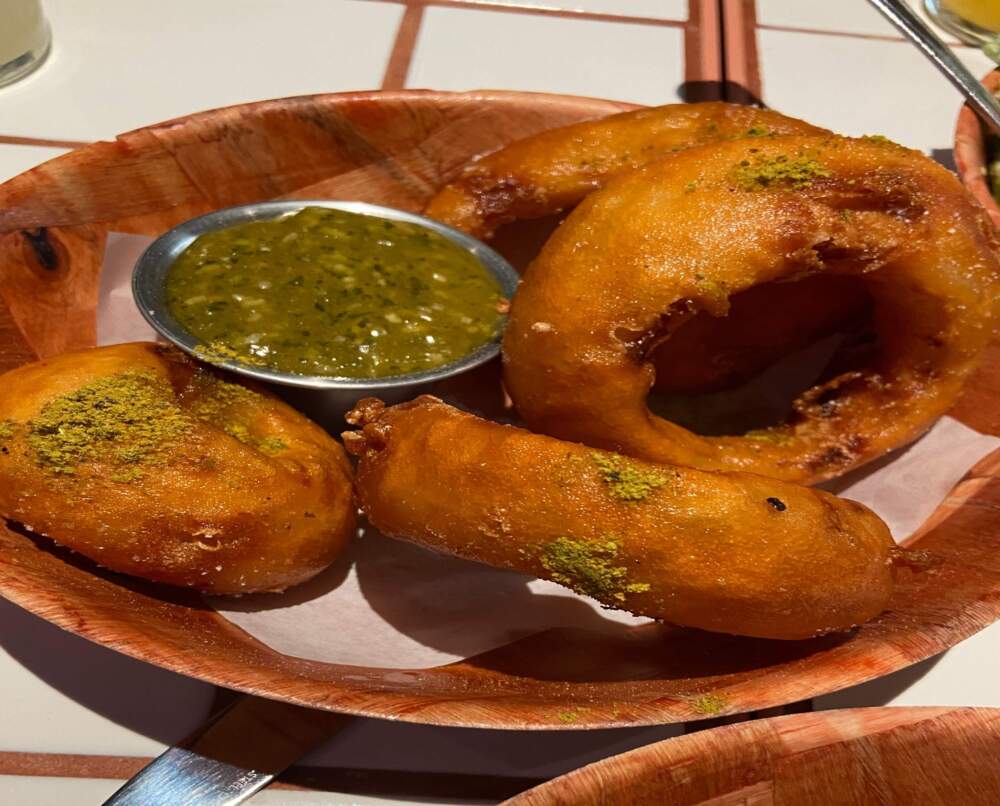
If you’re like me, one of the best ways to remember what you did in the past year is to scroll back through the hundreds of photos on your phone. Looking back on 2023, I see endless images of great meals, visits to fabulous farmers markets and memorable dinners with friends and family. But some really pop out for me. It has to do with who I was with, where I was, and whether the food offered new flavors and gave me ideas for creating new recipes.
I was lucky enough to travel this year, both to teach and explore new cultures and cuisines from Mexico City to the Ligurian Coast of Italy, from Los Angeles to Maine and New York. Here are a few of the best bites I was fortunate enough to experience in 2023.
Pijja Palace: Dosa onion rings
Picture a sports bar with lots of big-screen TVs playing everything from tennis to football. But instead of the typical sports bar menu, Pijja Palace, on LA’s East Side offers chicken wings, pizza, and fried foods, all reinvented with Indian spices and big flavors. This is sports bar food with pow!
This is where you’ll find the best onion rings I have ever tasted. Yup, I said the best! Thick, fat slices of onion are dipped into a dosa batter (made of fermented rice and lentils) fried to crunchy perfection and served with a sweet and spicy green mango dipping sauce. There’s also tandoori spaghetti (tossed with spicy chile and ginger oil), green tikka pijja (pizza) and crisp green chicken wings with jalapeno, cilantro, chive and mint. Not to mention fabulous cocktails like chai whiskey sour — with Henebery whiskey, chai, darjeeling, lemon and egg white — and a jaggery old fashioned made with Amrut Indian whiskey, jaggery and cardamom bitters.
The place is noisy, full of life, and, in this time of chain restaurants and places that take themselves way too seriously, Pijja Palace is truly a unique bit of fun.
Kimchi stew inspired by Soban, Koreatown, Los Angeles
The first thing you notice when you enter this small, intimate space is oversized glass jars of fermented and pickled vegetables. Mushrooms. Ginger. Cabbage. Chile peppers. Next, you notice a framed photo of the cast of the film, Parasite, enjoying dinner at Soban after their Academy Award win in 2020. Next to that are photos of Jonathan Gold, LA’s beloved food critic who helped to put Soban on the map, posing with the restaurant’s chef.
You order the kimchi stew and the short rib stew and the waitress brings over bowls of banchan (side dishes), made from the pickled and fermented vegetables on display. The kimchi stew is hot and full of big flavors, and the fermented cabbage wakes up your entire body in appreciation of its intensity. The broth, a brilliant red color from chiles, fermented spices and cabbage, feels like it will cure anything the world throws at you.
The next day you find yourself at a Korean supermarket adding jars of kimchi, Korean red pepper paste (gochujang) and Korean red pepper flakes (gochugaru) into your cart so you can make your own version of kimchi stew. (You can mail order Korean ingredients here or here) or look for all these ingredients in a good Asian market.
And while this is not the stew you’ll find at Soban, this fiery version could become a staple to get you through the winter.
Kimchi, tofu and pork belly stew
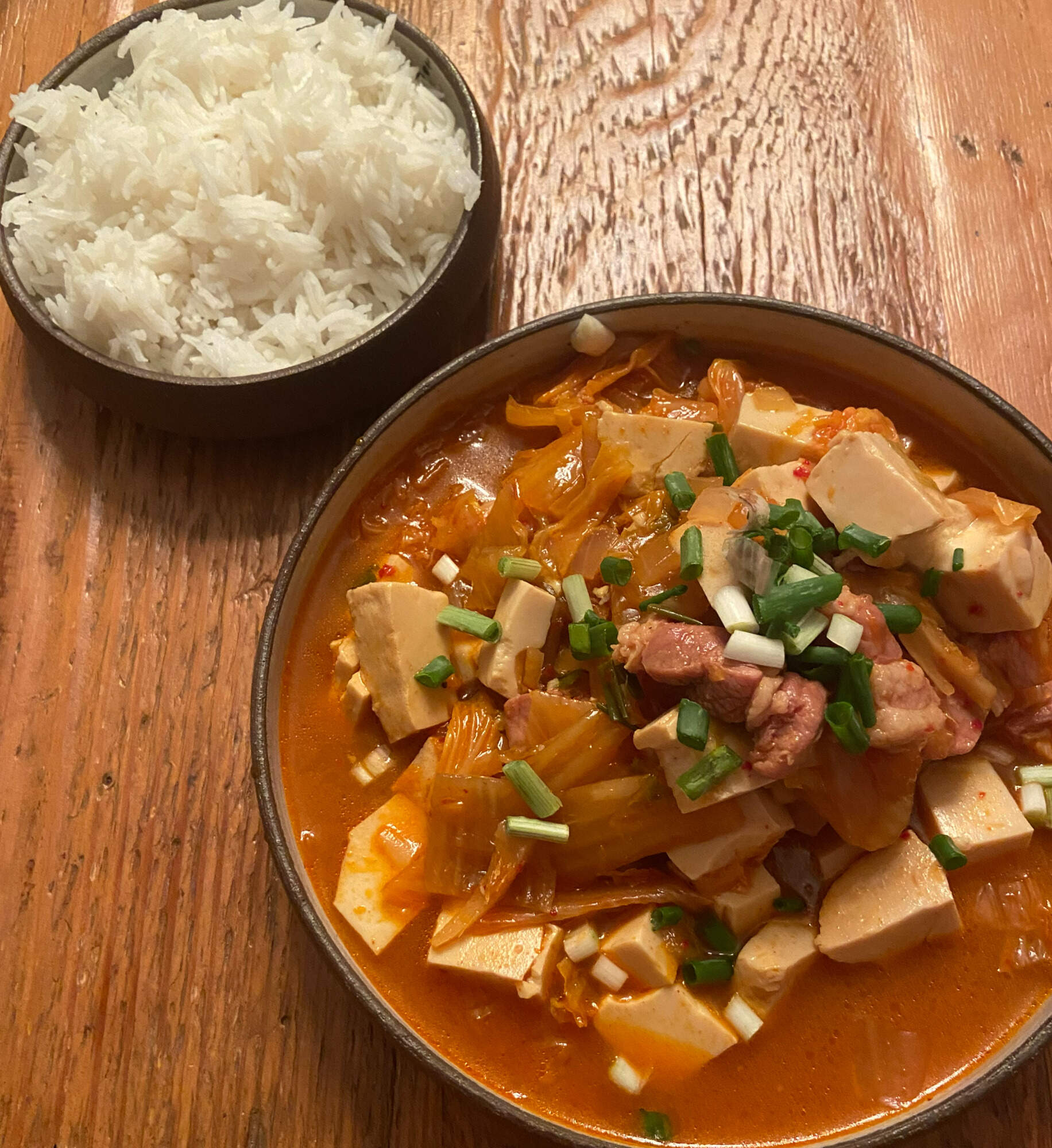
My version of this Korean stew uses marinated pork belly, but you could easily marinate tofu instead and have a vegetarian kimchi stew. If you’re making the stew with pork belly you will add 8 ounces of tofu at the end of the cooking time. If you're making a vegetarian version, you will use 14 ounces of tofu in the marinade and not add any at the end. Serve with rice and topped with finely chopped scallions.
Serves 4 to 6.
Ingredients
- ¾ pound pork belly or fatty pork chop, cut into 1-inch pieces OR 14 ounces soft or silken tofu, cut into 1-inch cubes
- 3 cloves garlic, finely chopped
- 1 tablespoon grated or finely chopped fresh ginger
- 1 tablespoon very thinly sliced fresh ginger
- 2 ½ tablespoons soy sauce or tamari
- 1 ½ tablespoons mirin (rice wine) or dry sherry
- 1 ½ teaspoons sesame oil
- 1 tablespoon fish sauce
- Freshly ground black pepper
- 1 tablespoon vegetable or canola oil
- 1 medium onion, chopped
- 2 cups kimchi, chopped
- About 3 tablespoons gochujang (Korean red pepper paste)*
- 1/2 teaspoon to 1 tablespoon gochugaru (Korean red pepper flakes), or chile flakes*
- ½ cup kimchi liquid from the jar of kimchi
- 4 cups water
- 8 ounces silken or soft tofu, cut into 1-inch cubes if using pork belly (omit if using tofu in the marinade and making a vegetarian version)
- 3 scallions, finely chopped
*You can make this stew as mild or spicy as you like by altering the amount of chile paste and flakes you add. Start with a smaller amount and build.
Instructions
- Marinate the pork or the tofu: place the pork or tofu in a medium bowl and gently toss with the garlic, chopped and sliced ginger, soy sauce, mirin, sesame oil, fish sauce and pepper. Marinate at room temperature for 30 minutes or cover and refrigerate for up to 4 hours.
- Make the stew with pork: in a large pot heat the oil over medium heat. Drain the pork from the marinade (but do not throw out the marinade) and cook, stirring, about 6 minutes. Stir in the onion and cook for 5 minutes. Raise the heat to medium-high and add the kimchi, gochujang, gochugaru, kimchi liquid, water and the marinade from the pork. Bring to a boil, reduce the heat to low and simmer, covered, for about 15 minutes. Gently stir in the 8 ounces of tofu, taste for seasoning and add more chile powder and paste if you like. Add half the scallions and heat through for 2 minutes.
- If making a vegetarian version, in a large pot heat the oil over medium heat. Stir in the onion and cook for 5 minutes. Raise the heat to medium-high and add the kimchi, gochujang, gochugaru, kimchi liquid, water and bring to a boil. Drain the marinade from the tofu and add to the pot, reduce the heat to low and simmer, covered, for about 15 minutes. Gently stir in the 14 ounces of marinated tofu, taste for seasoning and add more chile powder and paste if you like. Add half the scallions and heat through for 2 minutes.
- Serve the stew with bowls of rice, topped with the remaining scallions.
Spicy eggplant at Pot Luck Club, New York, NY
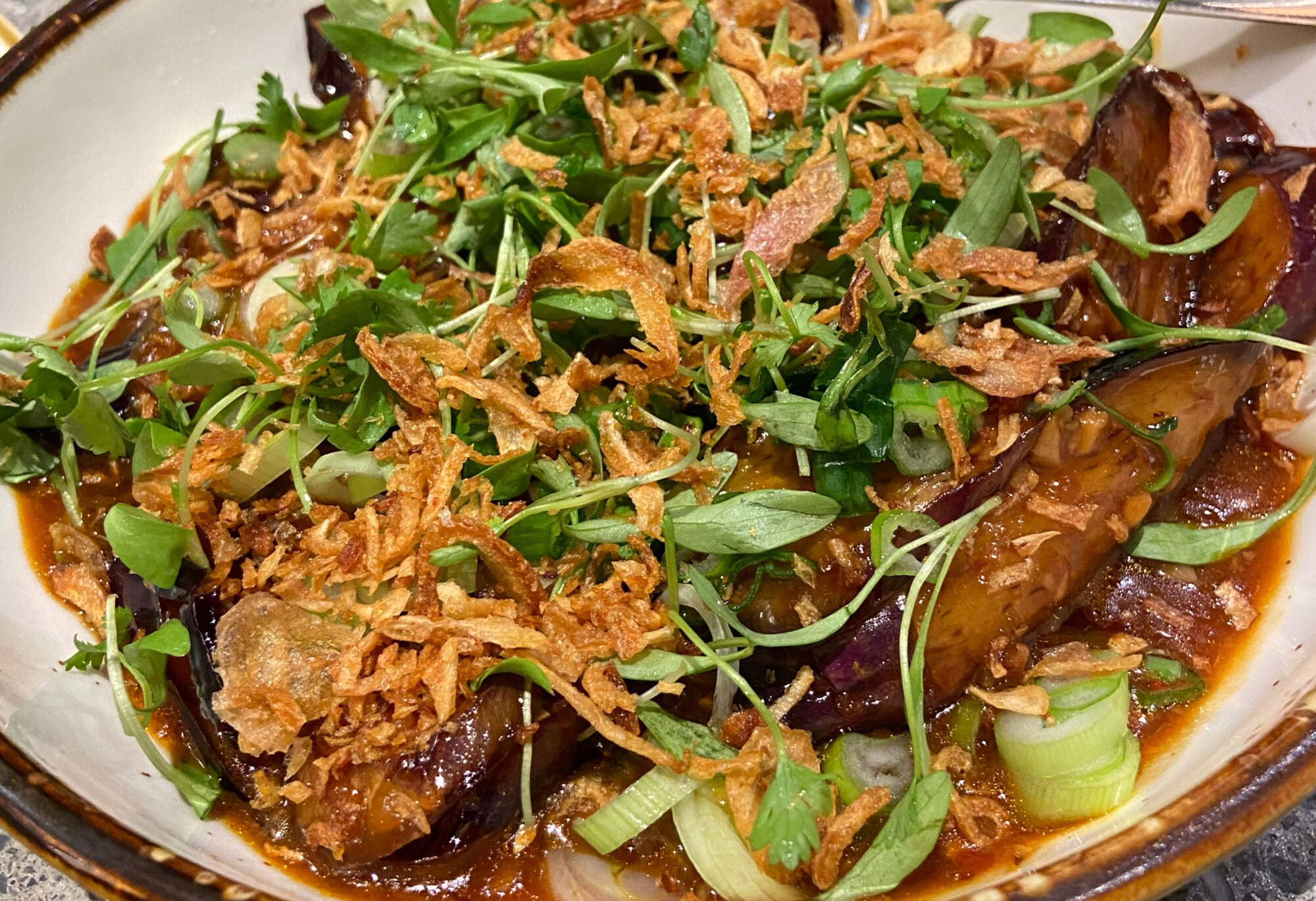
This Cantonese-American restaurant, located at the intersection of New York City’s Chinatown and Lower East Side, is hip, fun and buzzing with energy. We went for the pork and chive potstickers and the salt and pepper fried chicken with a scallion biscuit and pickled jalapeno and chili-plum jam. But if you only order one dish it should be the spicy eggplant with doubanjiang (spicy bean sauce), fried shallots and cilantro. The eggplant is cooked so expertly it feels silky in your mouth, perfectly tender, and topped with hot chile paste, crunchy fried scallions and fresh cilantro. It’s the perfect blend of textures, flavor and color.
Pumpkin fries and wood-fired beets at Walker’s, Cape Neddick, Maine
I’ve long been a fan of chef Justin Walker’s cooking. While most people visit Walker’s, his eponymous restaurant, for the Maine scallops or roasted Maine salmon, I am obsessed with his side dishes. In particular, the wood-fired beets with cultured cream, horseradish, maple syrup and sea salt. They are woodsy, smoky, sweet, and salty all at once. What he does to a beet — a most humble root vegetable — defies the very idea of a beet. And there are the pumpkin fries with ancho chiles and aioli. One bite, again a marriage of sweet and savory, and you’re hooked. Somehow you convince yourself that pumpkin is way healthier than potatoes and you eat them all, every single one.
Grilled kingfish fillet with two sauces at Contramar, Mexico City
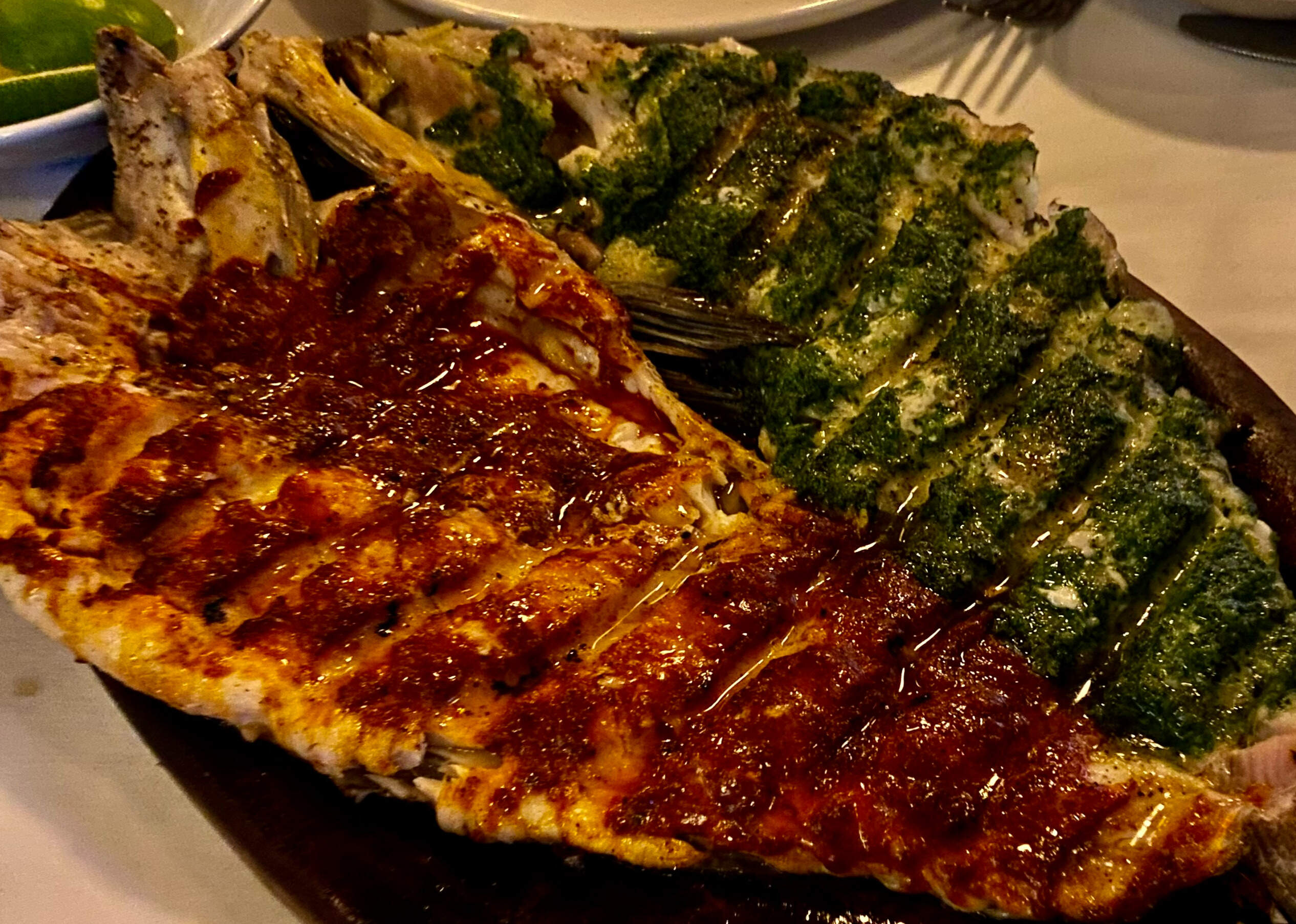
Waiters dressed in white jackets bearing platters of food dash through the spacious and airy dining room of this landmark Mexico City seafood restaurant.
While there are many incredible dishes to order here (in particular, the green shrimp aguachile), it is the grilled fish, fileted open, with half the fish coated in a deep red adobo rub and the other half with a brilliant green parsley rub, that stays in my memory. The fish is moist, perfectly crisp along the edges and tender inside. The red and green rubs offer a stunning visual contrast and warm earthy flavors.
Chilaquiles verdes at Fonda Margarita, Mexico City
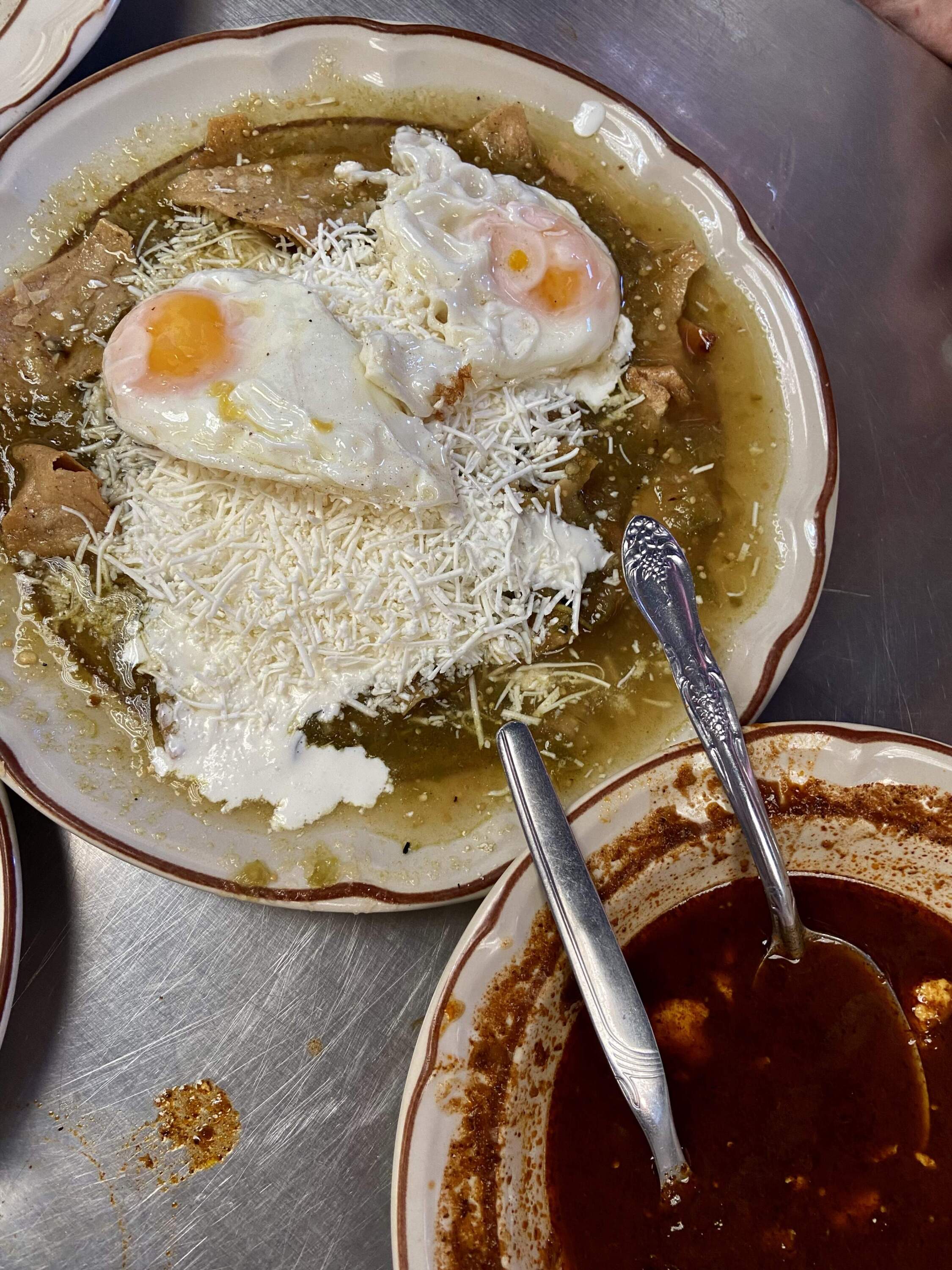
I hesitated to add this spot to my list since it’s not that well-known among tourists and is one of those gems you kind of want to keep to yourself. But I try not to be selfish when it comes to really good breakfasts. We walked in the small dining room and were seated next to a live band belting out classic favorites. It was the open kitchen at the far end of the room that really caught my attention. Cauldrons of bubbling stews and sauces in traditional clay pots sat on a grill top fed by wood fire. The chilaquiles verdes (freshly made corn tortillas with a green tomatillo sauce, topped with fried eggs) were perfection: The piquant green sauce, the freshly made tortillas, the perfectly cooked eggs, the music. We were the only tourists in the place on a sunny Wednesday morning this past February and felt we had truly arrived in Mexico City.
Farinata (Ligurian chickpea flour pancake) at Trattoria da Pezzi, Santa Margherita de Ligure
We had just arrived in Liguria, jet lagged and excited to learn about the foods of this coastal region whose capital city is Genoa. There was a long line outside a little restaurant down a quiet side street. We decided this was a good bet. We ordered grilled fish and pasta, but the waiter looked at us and said, “Farinata?”
"Cosa è farinata?," we asked. "What is farinata?" He just smiled and said “Si, si,” meaning we must try it. He then brought us a menu in English with a bit of history about farinata: “...legend has it that the dish was born in 1284, when Genoa defeated Pisa in the Battle of Meloria. The Genoese galleys, loaded with prisoner rowers, found themselves involved in a storm. In the commotion, some barrels of oil and bags of chickpeas overturned, becoming soaked in salt water. Since the supplies were what they were and there wasn't much to choose from, what was possible was salvaged and the sailors were given bowls of a puree of chickpeas and oil. Some sailors rejected the mush by leaving it in the sun, which dried the mixture into a kind of pancake. The next day, driven by pangs of hunger, the sailors ate the preparation and discovered its delicacy. Once back on land, the Genoese decided to improve their improvised discovery by cooking the puree in the oven. The result was pleasing and, to mock the losers, it was called ‘the gold of Pisa’".
About ten minutes later, a plate arrived with a thin golden bread or pancake, drizzled with aromatic green olive oil and sprigs of fresh rosemary. It smelled like wood smoke, nutty and inviting. We cut off small wedges and tasted the hot pancake. And we continued to cut off small wedges until we had devoured the entire thing. The waiter came by, cleared our empty plate and smiled approvingly.
Farinata is made from finely milled chickpea flour, water, and olive oil. It is closely related to the French pancake called Socca, found near Nice. Traditionally it is baked in a copper skillet in a wood-fired oven, but you can get excellent results making it in your home oven if the oven is at maximum temperature.
Farinata
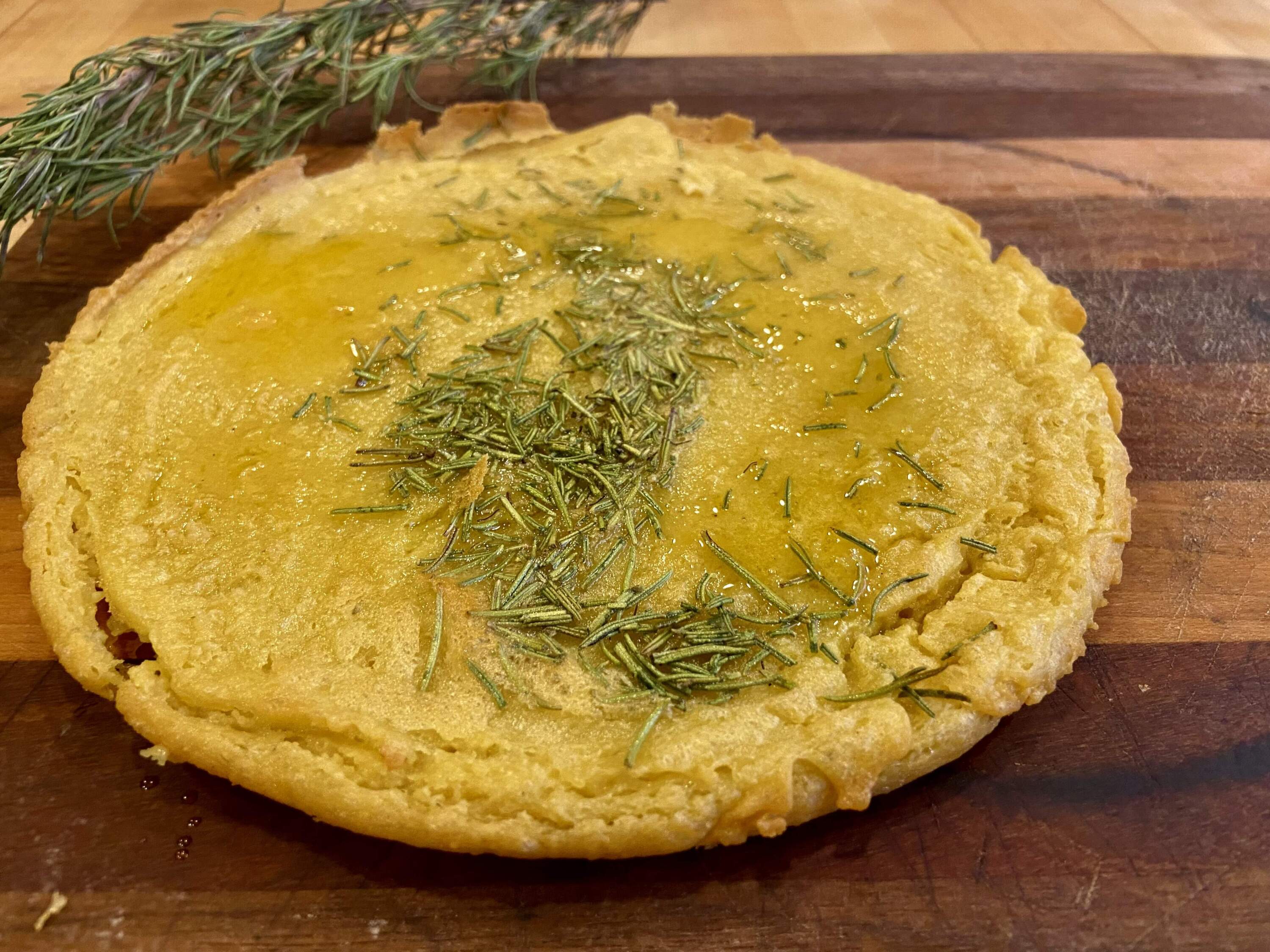
Look for finely ground chickpea flour (I experimented with Bob’s Red Mill chickpea flour) and cranked my oven to 500 degrees. If your oven can go as high as 525 degrees, give it a go. Use a copper-bottomed or cast iron or heavy skillet to bake the farinata.
Serve warm or at room temperature on its own, or topped with sauteed mushrooms, grilled radicchio, grated Parmesan, grilled fish, meats, salads, virtually anything.
Serves 2 to 4.
Ingredients
- 1 cup warm water
- 1 cup finely ground chickpea flour (I used Bob’s Red Mill)
- Generous amount of salt and freshly ground black pepper
- 2 ½ tablespoons olive oil
- 1 1/2 tablespoons fresh rosemary, chopped or 1 tablespoon dried and crumbled
Instructions
- Make the farinata batter: add the warm water to a medium bowl. Whisk in the chickpea flour, salt and pepper, and 1 tablespoon of the olive oil, and the rosemary, making sure to avoid any lumps. Cover and refrigerate for at least 1 hour and up to 12 hours; the batter should thicken slightly to look like a heavy cream consistency.
- To bake: place a heavy 8-inch skillet (cast iron or copper is ideal) in the oven and preheat to 500 degrees. When the oven hits 500, remove the skillet and carefully add 1 ½ tablespoons of the olive oil. Place back in the hot oven and heat for about 2 minutes, or until almost smoking. Carefully add the batter to the hot smoking skillet. Bake on the middle shelf for about 10 to 12 minutes until the edges begin to look crispy and golden brown and pull away from the sides of the skillet and the batter isn’t wobbly anymore. If the farinata is very pale in color you can place it under a broiler for 1 to 2 minutes to give it a richer, golden color.
- Remove from the oven and immediately drizzle with the remaining 1 ½ tablespoons of olive oil and a grinding of fresh black pepper.
This segment aired on December 29, 2023.
